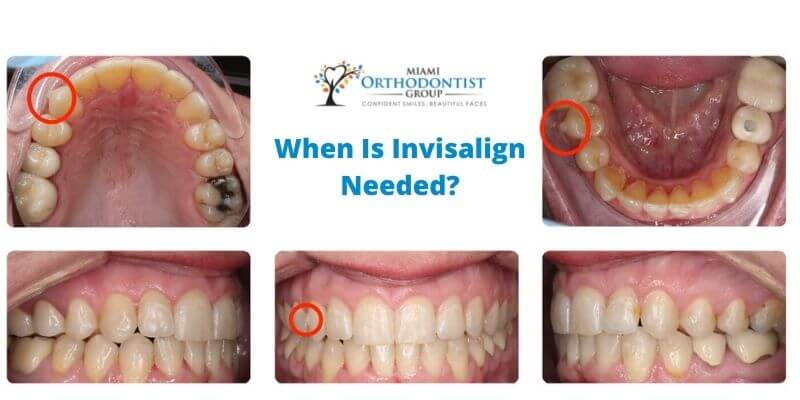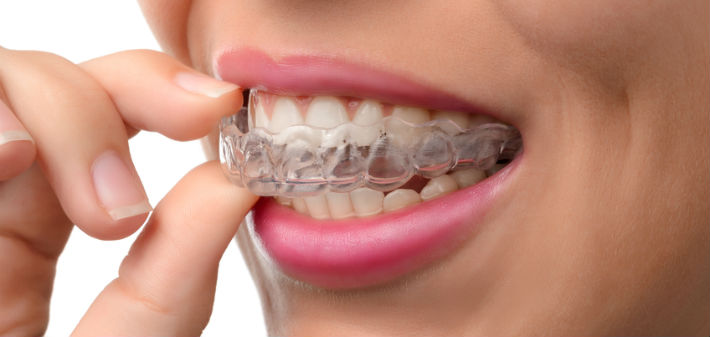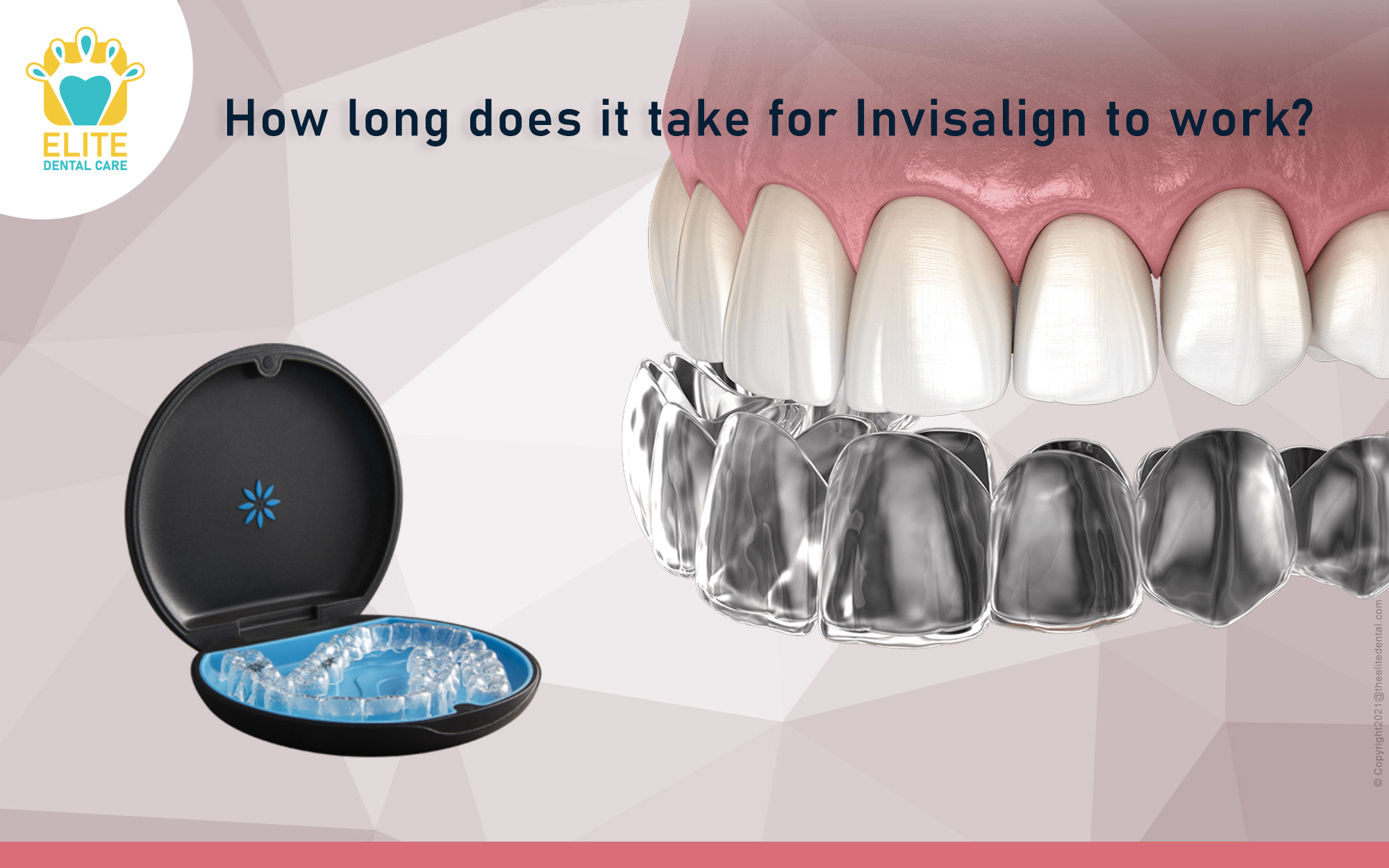Invisalign treatment duration typically ranges from 6 to 18 months, depending on the complexity of the case. This clear aligner system gradually shifts teeth into their desired positions, providing a discreet alternative to traditional braces.
Welcome to our blog! If you’re considering Invisalign treatment, you may be wondering how long it takes to achieve your desired results. We will explore the duration of Invisalign treatment and factors that may impact the timeline. Invisalign is a popular orthodontic option for individuals looking to straighten their teeth without the visibility of traditional braces.
With its clear aligner trays, Invisalign offers a more discreet and convenient solution. So, let’s dive into how long you can expect your Invisalign journey to be and what factors might influence the duration.
Introduction To Invisalign
The Popularity Of Clear Aligners
Invisalign clear aligners are a popular choice for straightening teeth.
Basics Of Invisalign Treatment
- Custom-made aligners for each patient
- Removable for eating and cleaning
- Gradual adjustment of teeth alignment
Factors Influencing Treatment Duration
Several factors influence the duration of Invisalign treatment, including the complexity of the case, consistency in wearing aligners, and individual response to treatment. How Long Does Invisalign Take? On average, Invisalign treatment can take anywhere from 6 to 18 months to achieve desired results.
Factors Influencing Treatment Duration The duration of Invisalign treatment can vary from person to person and depends on several factors. Understanding these factors can help you prepare for your treatment and manage your expectations. In this post, we will explore the three main factors that influence the duration of Invisalign treatment.
Complexity Of Dental Issues
The complexity of your dental issues is one of the most significant factors that affect the duration of Invisalign treatment. The severity of your misalignment, the number of teeth that need to be moved, and the presence of other dental problems such as crowding, spacing, or bite issues can all impact the duration of treatment. Generally, the more complex your dental issues are, the longer it will take for Invisalign to correct them.
Patient Compliance
Another critical factor that can influence the duration of Invisalign treatment is patient compliance. Invisalign aligners must be worn for at least 20 to 22 hours a day to be effective. Failure to wear the aligners for the recommended duration can prolong the treatment time and may even cause the treatment to fail. Patients who are not compliant with their treatment plan may need to repeat certain stages or may require additional aligners, which can add to the overall treatment time.
Age And Orthodontic History
Age and orthodontic history are also factors that can influence the duration of Invisalign treatment. In general, younger patients tend to respond faster to orthodontic treatment because their teeth and bones are still growing and can be more easily manipulated. Patients who have undergone previous orthodontic treatment may have more complicated cases that require longer treatment times.
Additionally, patients who have had extensive dental work, such as fillings or crowns, may require additional time to complete their Invisalign treatment. In conclusion, the duration of Invisalign treatment depends on several factors, including the complexity of dental issues, patient compliance, and age/orthodontic history. By understanding these factors, you can work with your orthodontist to create a treatment plan that suits your needs and helps you achieve your desired results.
Average Timeline For Invisalign
When it comes to straightening your teeth, Invisalign is a popular and discreet orthodontic treatment option. Unlike traditional braces, Invisalign uses clear aligners to gradually move your teeth into their desired position.
Initial Assessment To First Aligner
The journey to a straighter smile begins with an initial assessment with an Invisalign provider. During this consultation, your dentist or orthodontist will examine your teeth and determine if Invisalign is the right treatment for you.
If you are a suitable candidate, the next step is to take impressions or digital scans of your teeth. These will be used to create a 3D model of your mouth, which will help in designing your customized treatment plan.
Once the treatment plan is finalized, you will receive your first set of aligners. These aligners are designed to fit snugly over your teeth and are virtually invisible, making them a popular choice for those who want a more discreet orthodontic treatment.
Typical Treatment Phases
The Invisalign treatment typically consists of several phases, each with its own set of aligners. You will wear each set of aligners for about two weeks before progressing to the next set.
During the treatment, your teeth will gradually shift into their desired position as you move through the aligners. Your dentist or orthodontist will monitor your progress and make any necessary adjustments along the way.
On average, Invisalign treatment can take anywhere from 6 to 18 months, depending on the complexity of your case. It is important to wear your aligners for at least 20 to 22 hours a day to ensure optimal results.
Final Aligner To Retention
Once you have completed your final set of aligners, your teeth should be in their desired position. However, it is important to note that teeth have a tendency to shift over time. To prevent any relapse, your dentist may recommend the use of retainers.
Retainers help to maintain the new position of your teeth and are typically worn at night. It is important to follow your dentist’s instructions on how often and for how long you should wear your retainers to ensure the long-term success of your Invisalign treatment.
In conclusion, the average timeline for Invisalign treatment includes the initial assessment to the first aligner, the typical treatment phases, and the final aligner to retention. By following your dentist’s instructions and wearing your aligners as directed, you can achieve a straighter smile in a reasonable amount of time.
Comparing Invisalign With Traditional Braces
When it comes to correcting misaligned teeth, traditional braces have been the go-to solution for decades. However, Invisalign has gained popularity in recent years due to its clear aligners that are virtually invisible. In this section, we’ll compare the two methods in terms of treatment time, pros, and cons.
Treatment Time Comparison
The treatment time for both traditional braces and Invisalign varies depending on the severity of the misalignment and the patient’s compliance with wearing the aligners or braces. Generally, traditional braces take longer to straighten teeth than Invisalign. The average treatment time for traditional braces is 18-24 months, while Invisalign treatment time is between 12-18 months.
Pros And Cons Of Each Method
| Traditional Braces | Invisalign | |
|---|---|---|
| Pros |
|
|
| Cons |
|
|
Ultimately, the choice between traditional braces and Invisalign depends on the individual’s needs, preferences, and budget. However, it’s worth noting that Invisalign offers a more discreet and comfortable option for those who are concerned about the appearance of traditional braces.
Maximizing Treatment Efficiency
Best Practices For Aligner Care
Proper care of your Invisalign aligners can significantly impact the duration of your treatment. Always remove your aligners before eating or drinking anything except water to prevent staining and warping. Clean your aligners regularly with a soft toothbrush and clear anti-bacterial soap to maintain their transparency and prevent bacteria buildup. Never use hot water to clean your aligners, as it can deform them. Always store your aligners in their case when not in use to prevent loss or damage.
Importance Of Regular Dental Visits
Scheduling and attending regular dental visits are crucial to ensure the efficiency of your Invisalign treatment. Regular check-ups allow your dentist to monitor your progress, address any concerns, and make necessary adjustments to your treatment plan. These visits also provide an opportunity to address any issues with your aligners, ensuring that your treatment stays on track.

Credit: www.miamiorthodontistgroup.com
Potential Setbacks And Delays
While Invisalign is known for its efficiency and effectiveness in straightening teeth, there are potential setbacks and delays that patients may encounter during their treatment journey. It is important to be aware of these factors to ensure a smooth and timely process. This section will explore common causes of treatment extension and provide helpful strategies to mitigate any potential delays.
Common Causes Of Treatment Extension
Several factors can contribute to an extended treatment timeline with Invisalign. Understanding these common causes can help patients manage their expectations and be prepared for any potential setbacks. Some of the main reasons for treatment extension include:
- Non-compliance with aligner wear: Consistently wearing the aligners for the recommended 20-22 hours per day is crucial for the success of the treatment. Failure to comply with this requirement may result in slower progress and the need for additional aligners.
- Complex dental issues: Invisalign is effective for a wide range of dental concerns, but complex cases may require more time to achieve the desired results. Severe misalignment, significant bite problems, or other underlying dental conditions can contribute to a longer treatment duration.
- Inadequate oral hygiene: Maintaining good oral hygiene is essential during Invisalign treatment. Failing to properly clean the aligners and teeth can lead to complications such as tooth decay or gum disease, which may require additional dental work before continuing with the treatment.
- Missed appointments: Regular check-ups with the orthodontist are necessary to monitor progress and make any necessary adjustments. Missing scheduled appointments can delay the treatment process as it may take longer to identify and address any issues that arise.
How To Mitigate Delays
While some delays may be inevitable, there are proactive steps patients can take to minimize their impact and ensure timely completion of their Invisalign treatment. Consider the following strategies to mitigate potential delays:
- Follow the treatment plan diligently: Adhering to the recommended wear schedule and guidelines provided by the orthodontist is crucial for optimal results. This includes wearing the aligners for the prescribed amount of time and switching to the next set as instructed.
- Maintain excellent oral hygiene: Properly cleaning both the aligners and teeth is essential to prevent any oral health issues that could impede progress. Regular brushing, flossing, and rinsing with mouthwash will help keep the teeth and aligners in optimal condition.
- Attend all scheduled appointments: Consistently attending check-ups and progress evaluations is vital to ensure that any necessary adjustments are made promptly. This will help address any concerns before they escalate and potentially cause delays.
- Communicate with your orthodontist: If you experience any issues or concerns during your treatment, it is important to communicate with your orthodontist promptly. They can provide guidance and make any necessary adjustments to keep your treatment on track.
By understanding the common causes of treatment extension and implementing strategies to mitigate potential delays, patients can enhance their Invisalign experience and achieve their desired results in a timely manner. Remember, patience and consistency are key when it comes to successful Invisalign treatment.
Life After Invisalign
After completing Invisalign treatment, the duration varies based on individual needs, typically ranging from 6 to 18 months. Once the aligners are removed, regular retainer wear helps maintain the results achieved with Invisalign, ensuring a lasting, beautiful smile.
Maintaining Results Post-treatment
After completing Invisalign treatment, it is vital to maintain the results achieved. Consistent care is key.
Long-term Commitment To Retainers
Wearing retainers post-treatment is crucial for preserving the alignment of your teeth. Stick to the routine diligently.

Credit: arkansasfamilydental.com
Real Patient Experiences
Discover real patient experiences and get insights on how long Invisalign treatment takes. Gain valuable information on the duration of this popular teeth-straightening method without any inconvenience or discomfort. Get first-hand accounts from individuals who have undergone the process and learn about their personal journeys with Invisalign.
Success Stories
Invisalign treatment can yield remarkable results, as seen in many patients’ experiences.
Patients often achieve their desired smile transformation within 12 to 18 months.
Challenges Faced During Treatment
While Invisalign is convenient, some patients may experience minor discomfort initially.
Adhering to the recommended 22 hours of daily wear can be a challenge for some.

Credit: theelitedental.com
Frequently Asked Questions
How Long Does Invisalign Treatment Take?
Invisalign treatment duration can vary, but the average time is 12-18 months for most patients. The actual length depends on individual dental needs and the complexity of the case. Your dentist will provide a personalized estimate during the consultation.
Can Invisalign Work Faster Than Braces?
In some cases, Invisalign may offer a faster treatment time compared to traditional braces. The exact duration depends on the specific dental issues being addressed. Your dentist can provide insight into whether Invisalign may offer a quicker solution for your orthodontic needs.
What Factors Can Affect Invisalign Treatment Time?
Several factors can impact the duration of Invisalign treatment, including the severity of misalignment, compliance with wearing aligners, and the body’s response to treatment. Your dentist will evaluate these factors to provide a personalized estimate of the treatment timeline.
Are There Ways To Speed Up Invisalign Treatment?
While individual cases vary, following the dentist’s instructions, wearing aligners as directed, and maintaining good oral hygiene can contribute to the effectiveness and potential speed of Invisalign treatment. Your dentist can provide personalized guidance on optimizing your treatment timeline.
Conclusion
Invisalign treatment duration varies, but typically lasts 12 to 18 months. Following the prescribed treatment plan and wearing the aligners consistently will help achieve the best results. With proper care and regular check-ups, Invisalign can effectively straighten teeth and improve your smile.
Embrace the process and enjoy the transformative results.